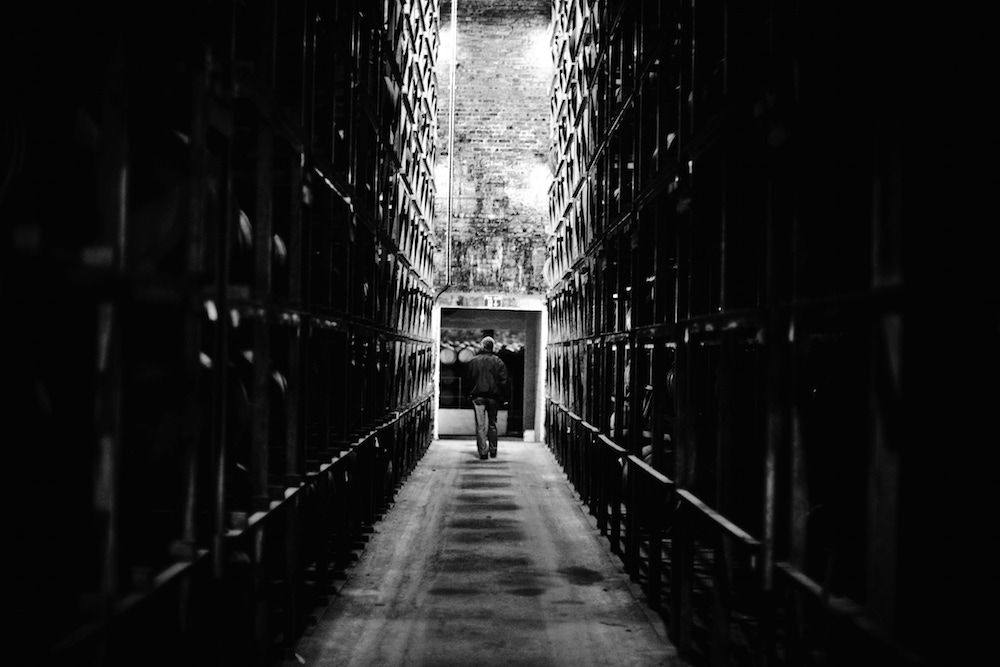The Rake Dispatch: A Guide to Pitti Uomo 104

Florence is a city that meets expectations. No matter how many times one crosses the sepulchral, marble Duomo or strolls the mustard-lit streets at night, there’s a feeling that everything is as it should be—that the postcard was accurate—and that the lucky Florentines live among an antique urban beauty that maintains its glorious past. The River Arno divides the city in two. North is the commercial and historical heart of Florence, where the Fortezza da Basso is located, as well as the major sites and the shopping districts. On the south bank, long-established families and newly-arrived students reside in quieter neighbourhoods with quaint squares and excellent restaurants. To the east is the large district of Sant’Ambrogio, which, by many Florentine accounts, is considered the last part of the inner-city to retain the local dialect and character. Summers are especially humid in Florence, owing to the surrounding hills that prevent any breeze from coming in and offering relief at the Fortezza. So, since you are aiming to be looking your best at Pitti, gentlemen, it is important to pick tailoring that is breathable and light. Once you’re all ready and packed, this is The Rake’s informed guide to Florence during Pitti Uomo.



WHAT TO KNOW
Florence’s cultural significance has been described in literature countless times. From Boccaccio’s Decameron to Dante’s Divine Comedy, Machiavelli’s The Prince, and even a curious travelogue by British polymath John Ruskin. That it looks beautiful is without question: the Duomo, Signora, Ponte Vecchio, and the many palazzos—hidden behind the renaissance facades on the city’s streets—offer the walker a sense of continuity and immersion. But Florence is also a cosmopolitan town. La dolce vita is alive in the restaurants, luxurious hotels, retro bars, and the grand piazzas. This is the beating heart of Tuscany—so you will eat and drink very well here, with residents holding high standards for their restaurants, and offering very strong opinions on where you should get dinner. Art and culture is naturally abundant, whether you visit the legendary Uffizi Gallery and peruse the finest Renaissance paintings, or the Accademia, in which Michaelangelo’s moving statue of David is housed. Of course, there is plenty of style on the streets too. The Florentine cut has more in common with British country-wear than its southern neighbours; designed to be worn out among the rolling Tuscan hills, with a more understated and conservative attitude—in part due to the city’s history dealing with the English cloth trade. Liverano and Liverano are the most exemplary purveyors of the Florentine Cut, and are certainly worth a visit.
WHERE TO STAY
The Helvetia and Bristol has been a hotel since the 1800s—frequented by travellers on their Grand Tour through Italy—but the 25 rooms are comfortably modern and situated in the very heart of Florence’s commercial district. The hotel also includes a stylishly-designed subterranean spa and pool, as well as the famous Cibreo restaurant. The opulent Saint Regis has become a hallmark of luxury in Florence. This is where the well-heeled rest their heads for the night—as the accommodating staff welcome celebrities, politicians, and artists. It is also located ideally beside the main sights, and fifteen minutes from the Fortezza. For those of you who require the presence of fashion at all times, the staff at the luxurious Ferragamo-owned Hotel Lungarno are uniformed in the brand’s latest collections, and it includes a sophisticated bar that stares out at the river Arno.
WHERE TO EAT
There are plenty of inviting trattorias dotted throughout the city. The flame-cooked bistecca alla fiorentina is a must for any visitor, and a locally-recommended address is Il Latini (a short walk from Harry’s Bar)—a friendly, wood-decorated tavern that has a satisfying Tuscan wine menu. It is also recommended by the Michelin Guide. The fashionable Trattoria Sostanza is frequented by all the familiar faces during Pitti, and for good reason: their bistecca and artichoke pie earn returned visits. But if you want to escape the crowd (without leaving the centre too far behind) Osteria Nuvoli, near the Duomo, is always full of families who crave their traditional, hearty Tuscan dishes. Those of you fortunate to be staying at the Hotel Helvetia and Bristol will have the legendary Cibreo restaurant on your doorstep, which has no set menu, and is renowned for its inventive use of local flavours and attentive staff. Enoteca Pinchiorri is one of six addresses with three-Michelin stars to its name, providing innovative twists on Tuscan classics. But if you have time to leave the city centre during your stay, we recommend Arnolfo in the picturesque hill town of Col di Val D’Elsa. Ingredients are sourced locally, and it pairs well with a day trip to the town of Saint Gimignano, with its unique skyline of Mediaeval towers.






WHERE TO HAVE LUNCH
Since you will be on-the-move during Pitti, it’s worth remembering where Florence’s best sandwich stops are. All’antico Vinaio near the Signora has become legendary for the hearty portions and freshly-sourced meats and cheeses, and is a rite-of-passage for any visit. Too big of a queue? I Due Fratelli (just around the corner) does as good of a job, but instead of crunchy schiacciata flatbreads, they use classic panini bread. Semel in Sant’Ambrogio is another great option—open for just three hours a day, and their fillings depend on what is on offer at the nearby market and the ingredients that are in-season. Then there’s the staple Florentine sandwich, the lampredotto. Found in tiny carts across the city, this is the most traditional Tuscan street-food…although it is not for the faint-hearted. The lampredotto is a crusty roll filled with delicious stewed offal and greens, and I Pollini, in Sant'Ambrogio, is by far the best.
WHERE TO DRINK
After a long day of strolling in the sun around the Fortezza, a cold Negroni is the best way to reflect on what you have seen. Harry’s Bar is the obvious choice (and it’s likely you’ve already paid a visit) but there’s a whole host of other addresses to satisfy the most experienced barfly. Since it’s summer, you will want to find a seat on the terraces. The area around the Duomo, or artisanal Oltrano, includes a mix of pubs and luxury establishments with outdoor seating—like the sixties-inspired Mysterium. For a 1920s art-deco ambiance, we also suggest Bitter Bar, where you can enjoy cocktails against the sound of live jazz music. Sabor Cubanos, near San Lorenzo market, replicates the architecture of Havana inside (it is owned by a Cuban husband-and-wife who sometimes perform songs on the piano). They draw crowds for their famous Mojitos, as well as the vintage decor and bar. We have mentioned the Hotel Lungarno in our places to stay, but even if you are not booking a room, the bar itself is among the most elegant in the city. It is an ideal place to enjoy a Martini late into the evening, with the palazzos and Ponte Vecchio glowing in a mustard light from the waterfront terrace.
Florence has so much to offer, and like most well-attended cities, it is difficult to be sure whether you are experiencing authenticity. The addresses above will ensure that you are well-fed, rested, and watered by the time you return. The Rake wishes you a marvellous journey to Pitti.



